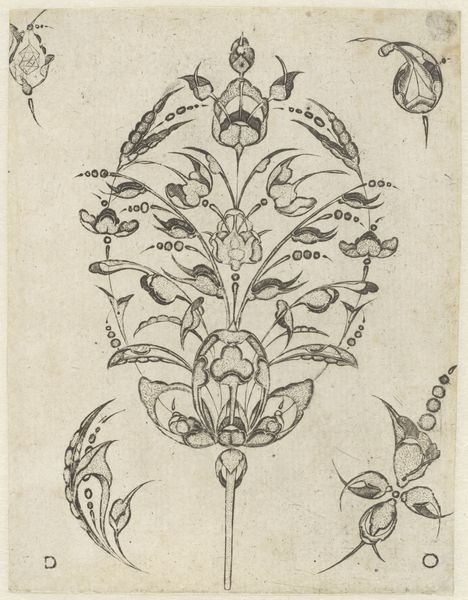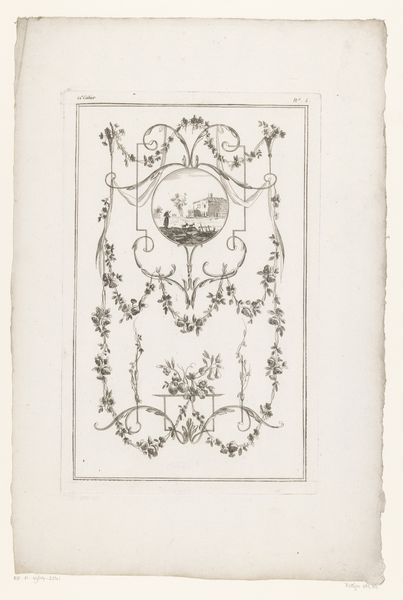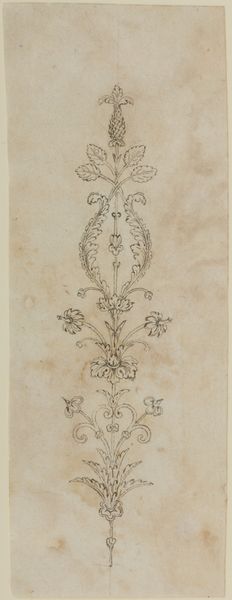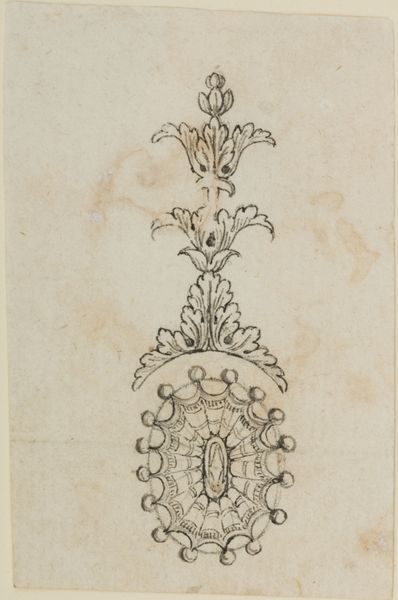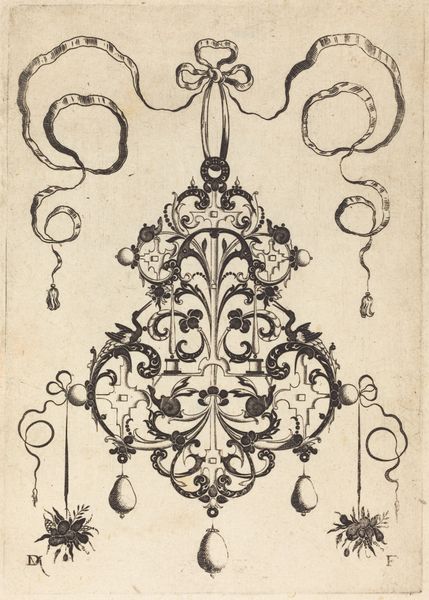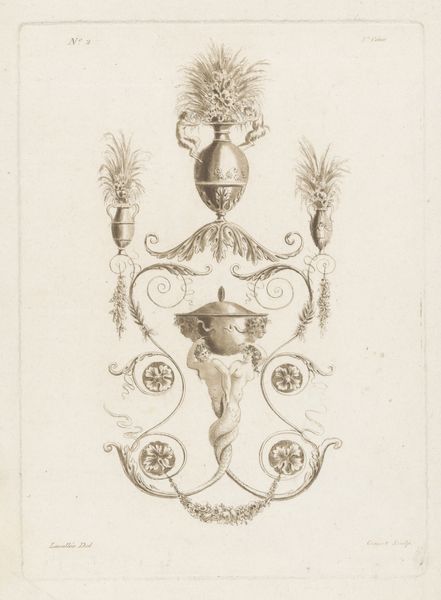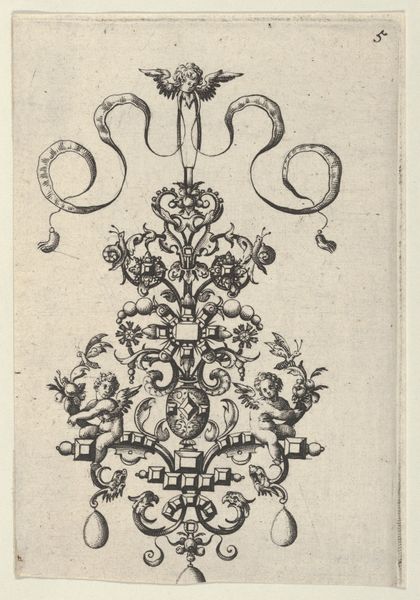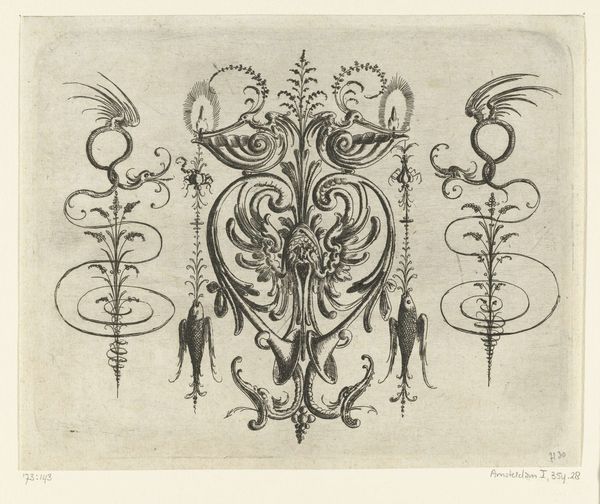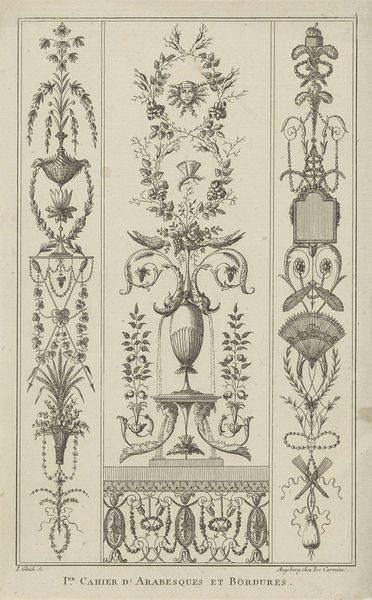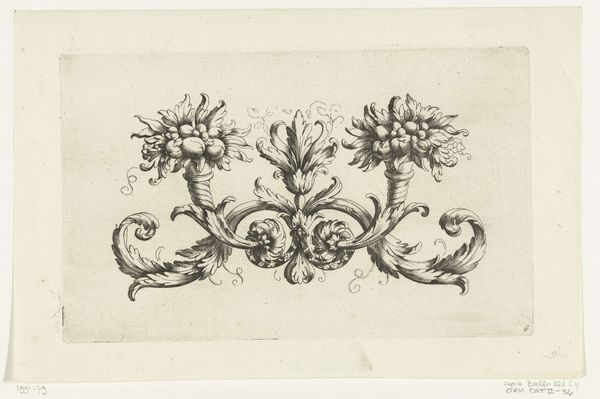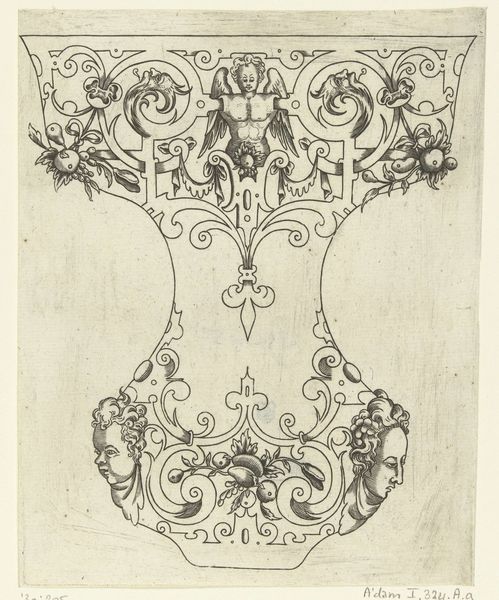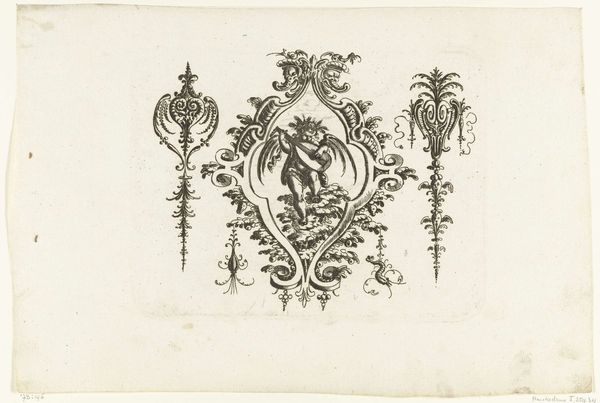
drawing, ink, pen
#
drawing
#
neoclacissism
#
allegory
#
pen drawing
#
pen sketch
#
old engraving style
#
classical-realism
#
figuration
#
form
#
ink
#
pen work
#
pen
Dimensions: height 285 mm, width 210 mm
Copyright: Rijks Museum: Open Domain
Curator: Before us is "Arabesken en engel," a drawing created around 1788 by Laurent Guyot. It’s housed right here at the Rijksmuseum. What’s your first take on this neoclassical piece? Editor: Immediately, I'm struck by the texture—or the *illusion* of texture—achieved with just pen and ink. You can almost feel the feathery quality of those stylized plumes. What exactly was Guyot using this drawing for? Curator: It seems that the design functions as an allegorical study and ornamentation in the neoclassical style, typical of its era. Given the French Revolution was on the horizon, it’s interesting to see the artist returning to these highly refined classical ideals. Editor: Absolutely. Considering the era's rigid class structures and artisanal training, it's intriguing how accessible ink and paper are as means of production, right? Yet, it represents high artistic aspirations in design and patternmaking. Is this perhaps meant for tapestry design? Curator: Quite possibly! We can trace the imagery and idealization of beauty back to sociopolitical tensions of the time; The angel as the focal point seems to be laden with cultural value regarding gender and class constructs of the time. There’s something subtly radical there. Editor: The detail with which Guyot uses the pen, particularly around the angel and acanthus leaves, indicates painstaking work and high levels of craft. The level of control he possesses, speaks to highly disciplined practice, that has it's place within production of commodities, certainly. Curator: I’d venture that beyond craft, this pen and ink drawing signifies a yearning for permanence and order amidst the social disruptions. An almost desperate attempt to reify classical values that might offer a bulwark against the anxieties of a rapidly changing world. It represents a cultural identity that seeks stability. Editor: In viewing this design, the careful consideration of the process and materials offer more than surface level aesthetic analysis, unveiling stories around labor, societal aspirations, and the currency of artistic production. Curator: Absolutely. "Arabesken en engel" showcases how design embodies culture, struggles, and fleeting hope for permanence that is reflective of Guyot's era. Editor: It’s an intriguing look at the material representation of artistic expression!
Comments
No comments
Be the first to comment and join the conversation on the ultimate creative platform.
